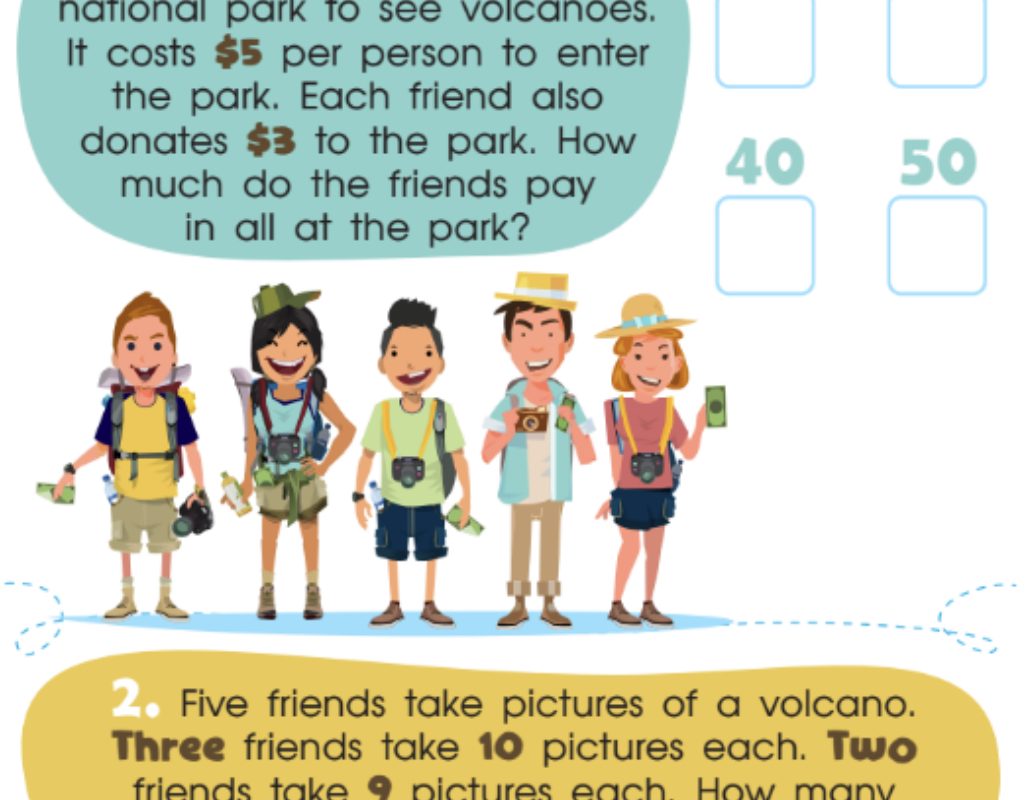How to Teach Multiplication
Some parents find it quite daunting to teach multiplication to kids. Which is no wonder because we remember how we had to learn multiplication tables, and then were continually drilled with a lot of problems. All of this while being timed. So if you are anxious about teaching multiplication to your kids, take a look at how it works today and find out about interesting activities and games that your kid can engage in to master this important milepost in math.
You may not believe it, but modern children start to acquire multiplication skills well before they even enter a 3rd grade classroom. While they are learning to count, add and subtract during the period from preschool to 3rd grade, they lay the groundwork for advanced math operations, such as multiplication and division.
Read our advice on how to teach your children multiplication and find more useful materials on the Kids Academy website.
Multiplication Skills Acquisition
As mentioned above, math teaching is markedly different today from the times present-day parents went to school. Pedagogy has evolved over time and teaching theories have also altered. In particular, modern educators started to employ more conceptual techniques of teaching math and departed from conventional methods after the Common Core Standards Initiative was introduced in 2010. Researchers and teachers now realize the importance of teaching kids to understand the math concepts that are behind the problems they are solving.
Instead of simply memorizing operations followed by “drilling and killing”, which used to be the practice in math classes, modern children learn not only “the how” but also “the why” when they solve math problems. Research has shown that children with a solid grasp of numeracy are more likely to succeed in math as they progress through their school careers and throughout their lives.
Contemporary classrooms teach children to build number sense and get the grasp of mathematical operations gradually. This includes starting counting and place value. The foundation for understanding multiplication is laid when students learn to skip count as well as add doubles. Understanding these operations helps children to master multiplication well before they can see a worksheet with a multiplication problem for the first time. Read on to find some ideas on how to teach single-digit and multi-digit multiplication to your young learner.
Multiplication with Single Digits
Pictures and Real Life Examples
An excellent way to teach multiplication to young learners is to begin by giving examples of real-life situations and after that drawing pictures representing them. It’s critical for children to be able to relate math problems to the real world and see the concepts in action.
You need some crayons and a piece of paper to begin. First your child should draw three cars, each car with four tires. Next, give your child the following word problem to read. “There are three cars. Each car has four tires. How many tires are there on three cars?” Have your child count them and write the answer down. Point out that you are dealing with a multiplication problem. Now write the equation: 3×4=6.
Continue to use the same strategy with easy-to-draw images that your child can draw and then count. Draw cars with tires or slices of pizza with pepperoni or ladybugs with spots. Continue practicing until your kid grasps the concept.
Adding Doubles and Writing Problems
Children know how to add doubles as early as in the first grade. So it’s a good idea to start with this concept when introducing multiplication in the 3rd grade. First write multiplication problems that only deal with multiplying by 2. Tell the kids that multiplying a number by two doubles it and ask them to remember what they already know about adding doubles.
Using word problems will also assist children with identifying the numbers and writing down multiplication sentences by themselves. If your child is having difficulty solving the problem, you might want to encourage them to draw it first and then count. After they have mastered multiplication by 2, it’s time to start teaching multiplication by other numbers and multiplication facts.
Word Problems
A worksheet full of problems is not the best way to introduce multiplication. First kids should make sense of multiplication concepts, and word problems help them to grasp these concepts and make them more real.
Once you have printed a simple one-digit word problem on a worksheet, read the whole problem carefully. Colored pencils can be used to underline key words and, if necessary, to circle any numbers that you need to solve the problem. Your next step is to write the problem as a multiplication sentence and solve it.
The Zero Rule
There is a universal math rule which states that the product of a multiplication problem must be zero if one of its factors is zero. This concept is easy to teach, and it provides a simple and quick way for kids to solve multiplication problems in which a zero is included. You can also find to a catchy song “Multiply By 0” on Jack Hartmann Kid’s Music YouTube Channel to help your kids to memorize the rule.
So when is the right time for kids to start memorizing more multiplication facts? As soon as they have mastered the multiplication concept. This is the correct moment for them to move on to multi-digit multiplication and to learn more facts and rules.
Multi-Digit Multiplication
When your child feels that they have understood what multiplication is and can solve simple one-digit problems, it is time to get the hang of multi-digit multiplication. It can be more complex, but there are some strategies that can help your child to tackle this challenging task.
Once you are satisfied that your child understands multiplication and is able to solve basic one-digit problems, they should start learning how multi-digit multiplication works. They are more complex, but there are some strategies you can employ to help any child to solve these problems, however tricky they look at first sight.
Multiplying Partial Factors
Every adult knows how to use mental math to solve real-world problems. To solve them more easily, most people break down factors. Let’s take an example: the problem says 14×30.We should take the factors and break them down into numbers that are convenient to work with. The number 10 is something that the majority of us will find easy to deal with.
Multiply 10 times 30 individually before multiplying 4×20 and adding the two products. This is what it looks like this on paper:
(10×30)+(4×30)=.
This is much more simple!
Adding Zeros
There is a trick when you multiply numbers by 10, 100, 1000 etc. You can just add zeros. For example, multiplying 45×100 add two zeros to the place value, so the product will equal 4500.
It should be noted that children must have a good understanding of place value before they start using this concept. They should be able to comprehend the math behind the trick. If you feel confident that your child understands how adding zeros works, then teach them the trick to make multiplication simpler when working with factors that contain multiple zeros. There is a well-known Schoolhouse Rock track “My Hero, Zero” that can reinforce the concept.
So if you are having difficulty teaching multiplication to children, you may find the strategies listed above helpful. However, there are many other techniques that can be applied to help your child to master multiplication. When your kid is familiar with the basics of math, they will solve more sophisticated problems with more ease



